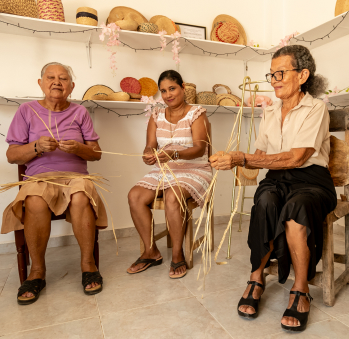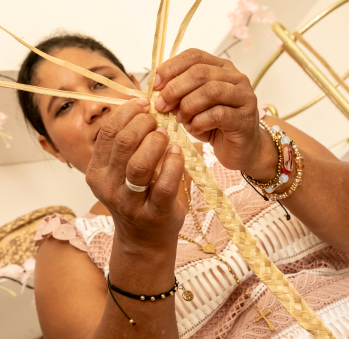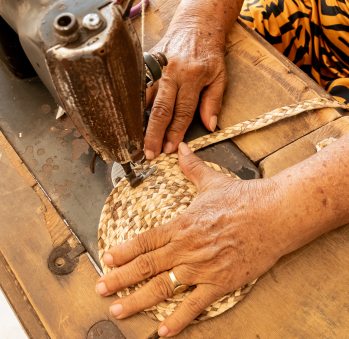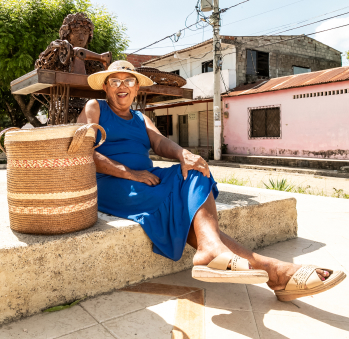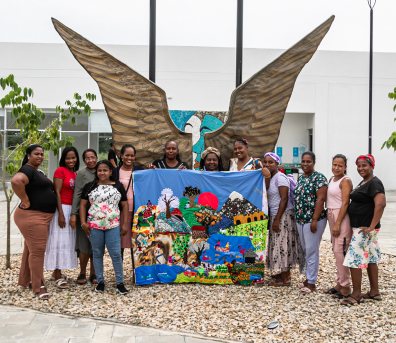Ángela María Martínez
Workshop: Asociación de mujeres palma sara asomaps (Taller propio es Angela Martínez)
Craft: Weaving
Trail: Bolívar Route
Location: Magangué, Bolívar
SCHEDULE YOUR VISIT
Calle 11 # 3 - 18 Cascajal, Magangué, Bolívar
3203139399
felipamartinez2412@gmail.com
@asoamaps
Her sewing machine is over fifty years old. It was a gift from her uncle when she lived in Barranquilla and worked in dressmaking, and it came in handy when she returned to the village of Cascajal, in Magangué, to dedicate herself to weaving with sará palm. The machine withstood the hard work and has remained her right-hand tool for sewing the palm braids with which she creates baskets, rugs, coin purses, fans, bread baskets, and hats — because in the beginning there were the hats.
This is the art of her village. That’s why when Ángela María speaks, she does so knowing she is part of a tradition much larger than herself. She recalls having met her grandmother and watching her handcraft hats while telling her how, in the past, everyone worked this way. According to the story, one day, a man showed up, deeply interested in what they were doing, and told them he would find a way to make their work easier. He returned to the village with four sewing machines, and from then on, everything changed. People started learning how to use the machines, getting their own, and after being relieved from the painstaking task of hand-sewing hats, they finally had the time and energy to start inventing new things.
Perhaps the sweetest and clearest memory from her childhood is the time spent with her mother, Doña Albertina Martínez, on trips to nearby towns to gather the heart of the sará palm. They would dry the palm hearts in the sun for fifteen days, then brush them to remove the fibers. She would sit her daughter on the back of their donkey, a one-hour ride each way, and return to the village with their materials. At twelve years old, Ángela María learned to weave the basic braids, which are called concha e’ jobo for their rustic appearance, similar to the texture of jobo shells. Back then, a dozen simple hats would sell for only one or two thousand pesos, a fact she clearly remembers because, from a young age, she had to work. Her father had passed away, and her mother was left to care for six children. She had to become both mother and father, raise them, and teach them how to weave. Everything they knew, they learned from her; the rest was practice. She left them a beautiful legacy: the craft with which they would later raise their own children.
Now, after over fifty years immersed in the craft, as the years begin to erase her handprints, Ángela María gives thanks to God and the sará palm for her life. She has been able to teach her daughter and grandchildren, following one of her village’s guiding principles: everyone learns, one way or another. She also takes pride in having been one of the first to join forces with other artisans to attend workshops, train others, and begin participating in fairs. That’s why she still keeps the badge from her first time at Expoartesanías in 1997. Today, she is part of the Palma Sará Women Association, Aso Amar, a group of fifteen women, including single mothers. And while their main focus now is sewing the braids made by others, they fondly remember the times when they would sit on the doorsteps at night, pick up a bunch of palm, and by the time they stood up to go to bed, they had woven over twenty braids, almost without realizing it.
Craft


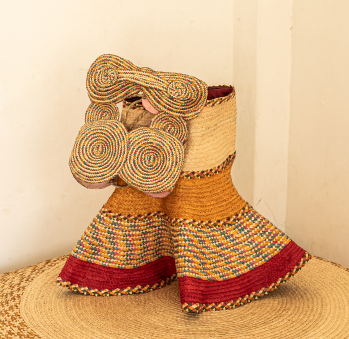

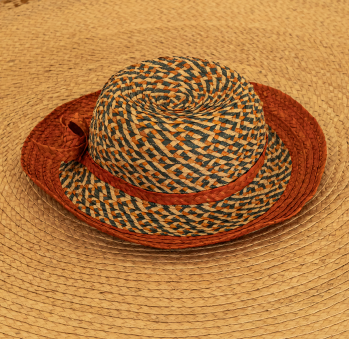
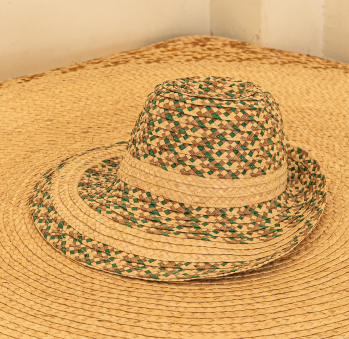












Artisans along the way
Artisans along the way
No puede copiar contenido de esta página









































